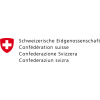The central strategy of the project is to develop national and regional capacities within the public sector, starting from the existing institutions and systems. It also seeks the collaboration of academic institutions and other institutions in the region in order to integrate disaster risk reduction and sustainable and inclusive adaptation to climate change. in public investment. The following components are being developed:
1.-Methodological guides and toolboxes
2.-Courses and trainings
3.-Pilot projects
4.-Geographic Information System Platform (GIS) and public investment modules.
We are working directly with the national institutions that are related to the SNIP in the participatory construction -in coordination with the technical officials of the countries- of the methodological guides, regulations, information systems platforms (geographic platforms and databases), so that they can incorporate analysis and measures for disaster risk reduction and sustainable and inclusive adaptation to climate change, throughout the public investment project cycle. This has also been strengthened through the incorporation of national and regional universities.
We are also working with different regional institutions within the framework of the Central American Integration System (SICA), like SIECA, CEPREDENAC, ICAP, CRRH y SG-SICA among other, which are related to the processes of preparation of public investment projects, allowing a more effective intervention and facilitating the adoption of the regional instruments generated.
The project is promoting a Geographic Information System (GIS) platform on disaster risk and public investment modules within the framework of COSEFIN. It is also expected to develop national systems which will help to strengthen risk analysis and cost-benefit analysis of public investment projects. The premise that the design of public investment projects must have an accessible information system that provides sufficient and necessary data and knowledge for a correct formulation of the projects.



